In today’s performance-driven marketing environment, many brands are gravitating toward short-term tactics to drive immediate conversions. However, research shows that long-term brand marketing yields stronger and more sustainable business outcomes.
Brand marketing is not just about visibility; it is about building emotional connections, and generating lasting business impact. Long-term campaigns don’t just fill the funnel, they build future demand.
Understanding Campaign Objectives
Defining Long and Short-Term Campaigns
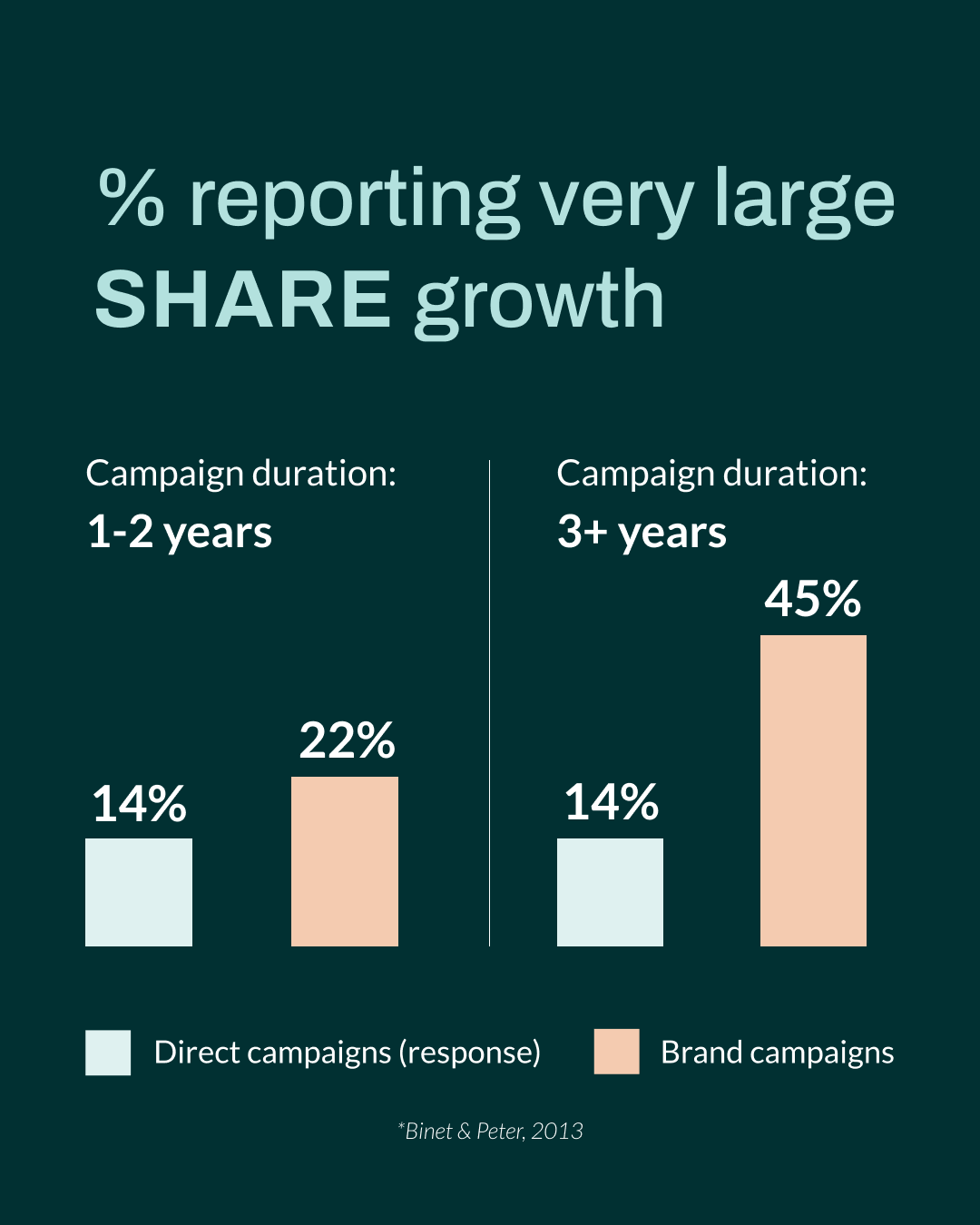
Short-term campaigns are built around urgency:
- Immediate calls-to-action (CTAs)
- Time-limited offers
- Designed to produce quick performance results
By contrast, long term campaigns:
- Pure brand messaging
- Avoid urgent CTAs
- Messaging or offer (if any) is not time-limited, can potentially run in the long run
While performance marketing may appear more measurable, brand marketing builds trust, reduces price sensitivity, and improves conversion rates over time.
Strategic Value of Brand Marketing
Increasing Share of Voice
The ultimate goal of brand marketing is to increase share of voice - how much influence a brand has relative to its competitors. Share of voice is typically calculated through metrics such as:
- Impression share
- Marketing spend relative total category spend
- Varies by channel
Correlation with Business Outcomes
An increase in share of voice is strongly linked to positive business results, including profit growth, increased sales, improved market share, greater customer loyalty, and reduced price sensitivity. These relationships are well documented in marketing literature.
Recently, a study of TikTok ads across 143 brands, shows brand awareness had a strong correlation with impression conversion rates. This demonstrates that upper-funnel branding efforts directly support performance at the lower funnel.
Why Long-Term Campaigns Outperform
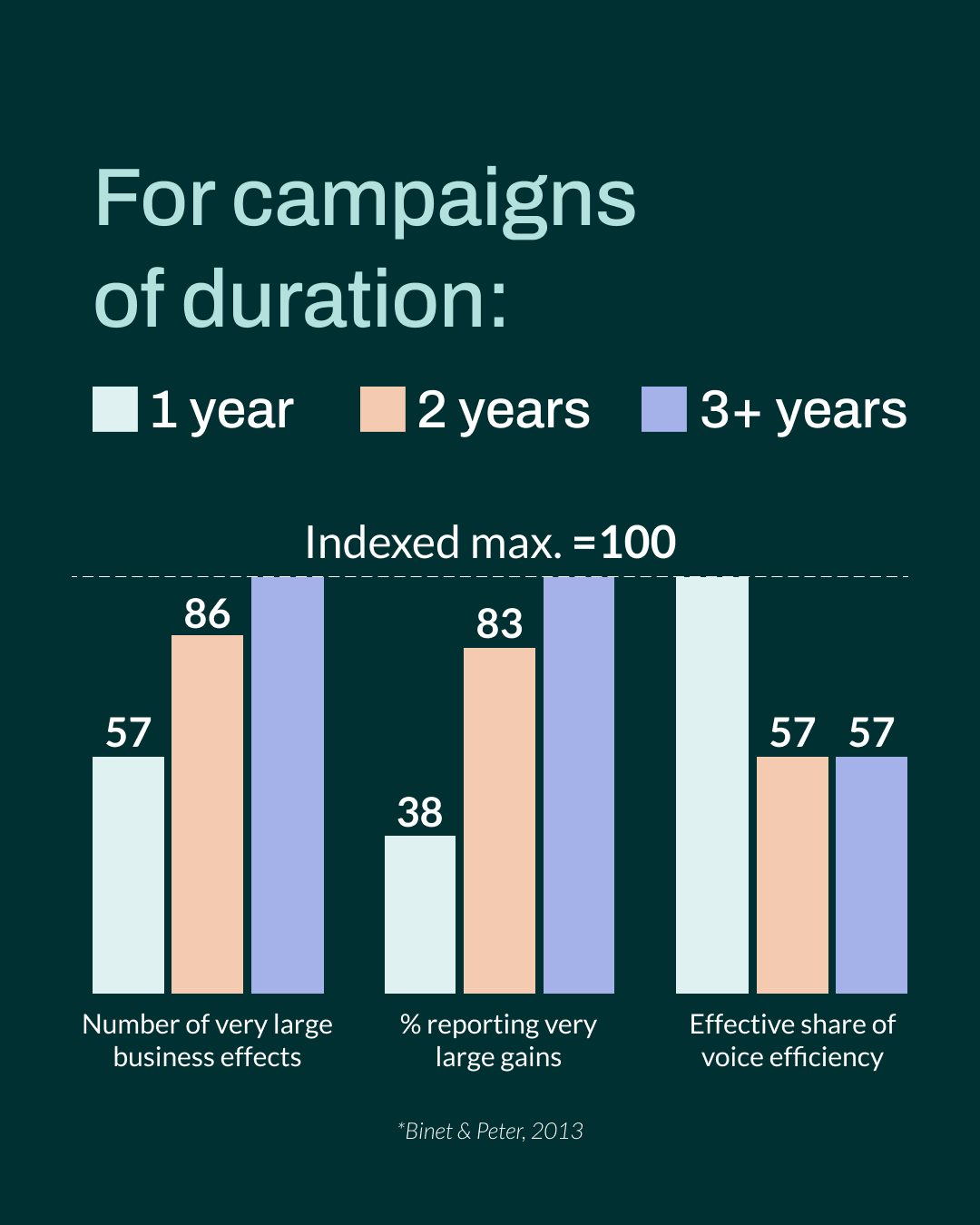
Long-term brand marketing builds cumulative impact. Repeated exposure to consistent messaging leads to an emotional connection, which reduces price sensitivity and increases the likelihood of conversion over time. Emotional familiarity and trust become competitive advantages. Unlike short-term tactics, brand marketing compounds - shaping perception, building loyalty, and driving sustainable growth. Over time, it not only boosts conversion efficiency but also strengthens customer relationships, leading to more resilient demand across every channel.
Efficiency from brand campaigns tends to peak after three or more years of sustained investment. At that point, diminishing returns may start to set in, but only after the full compounding effect has been realized.
When performance is measured over longer time horizons, brand campaigns outperform short-term response campaigns in key areas like sales lift, market share, and loyalty.
Executing Brand Strategy Effectively
Matching Messaging to Funnel Stage
Brand and performance tactics serve different purposes and should be structured accordingly within a cohesive marketing strategy. Top-of-funnel brand campaigns are designed to build awareness, trust, and emotional resonance. These efforts should avoid urgency or price-focused language. Instead, they should focus on storytelling, values, and imagery that rate long-term affinity and shape how people perceive the brand over time.
This sustained presence at the top of the funnel helps audiences develop familiarity and preferences, key ingredients for future conversions.
Bottom-of-funnel campaigns can then activate the interest generated by brand exposure. These campaigns might feature a time-sensitive offer or product-specific call-to-action that helps convert attention into action.
Emotional messaging is key. While rational, price-based appeals work well in the short term, emotionally driven campaigns have a stronger effect on long-term brand strength. To be effective, especially online, ads need to capture attention for at least 2.5 seconds to embed awareness.
Brand Response Ads
There are also hybrid approaches that bridge brand and performance. Brand response ads, for example, can feature full-price products or new product launches with a CTA. In the B2B context, this could mean encouraging users to “book a demo” while maintaining non-promotional, brand-consistent creativity.
These types of campaigns drive both brand lift and conversion, without resorting to deep discounts or urgency-based messaging.
Rethinking Audience Strategy
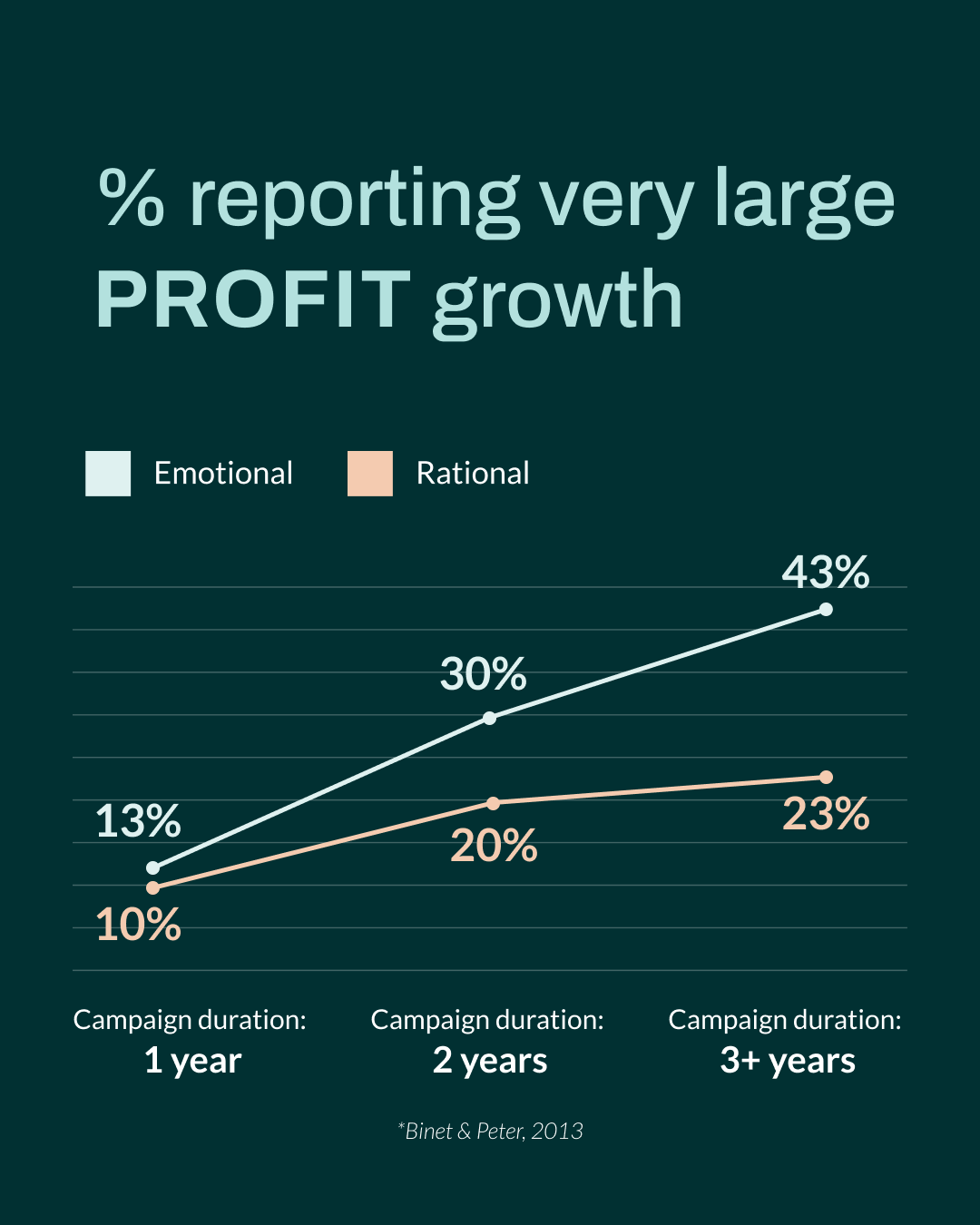
Why Broad Targeting Works
Brand campaigns should cast a wide net. Limiting efforts to known audiences or existing customers might offer short-term profitability, but it doesn’t lead to long-term market growth or increased share of voice.
Expanding reach to include both new and existing customers delivers stronger performance over time. In today’s crowded online ecosystem, broad targeting is one of the most effective strategies for increasing brand penetration and generating incremental growth.
Balancing Brand and Performance
Brand and performance strategies should complement, not compete with, each other. Together, they drive both near-term impact and long-term success.
Optimal Budget Allocation
The research recommends a 60/40 budget split, allocating 60% of investment toward top-of-funnel brand campaigns and 40% toward bottom-of-funnel performance efforts. This mix helps mitigate the diminishing returns associated with performance-heavy budgets and ensures that brand equity continues to grow.
This balanced investment approach delivers the highest number of measurable business effects, including profit, sales, and share growth.
Risks of Short-Term Thinking
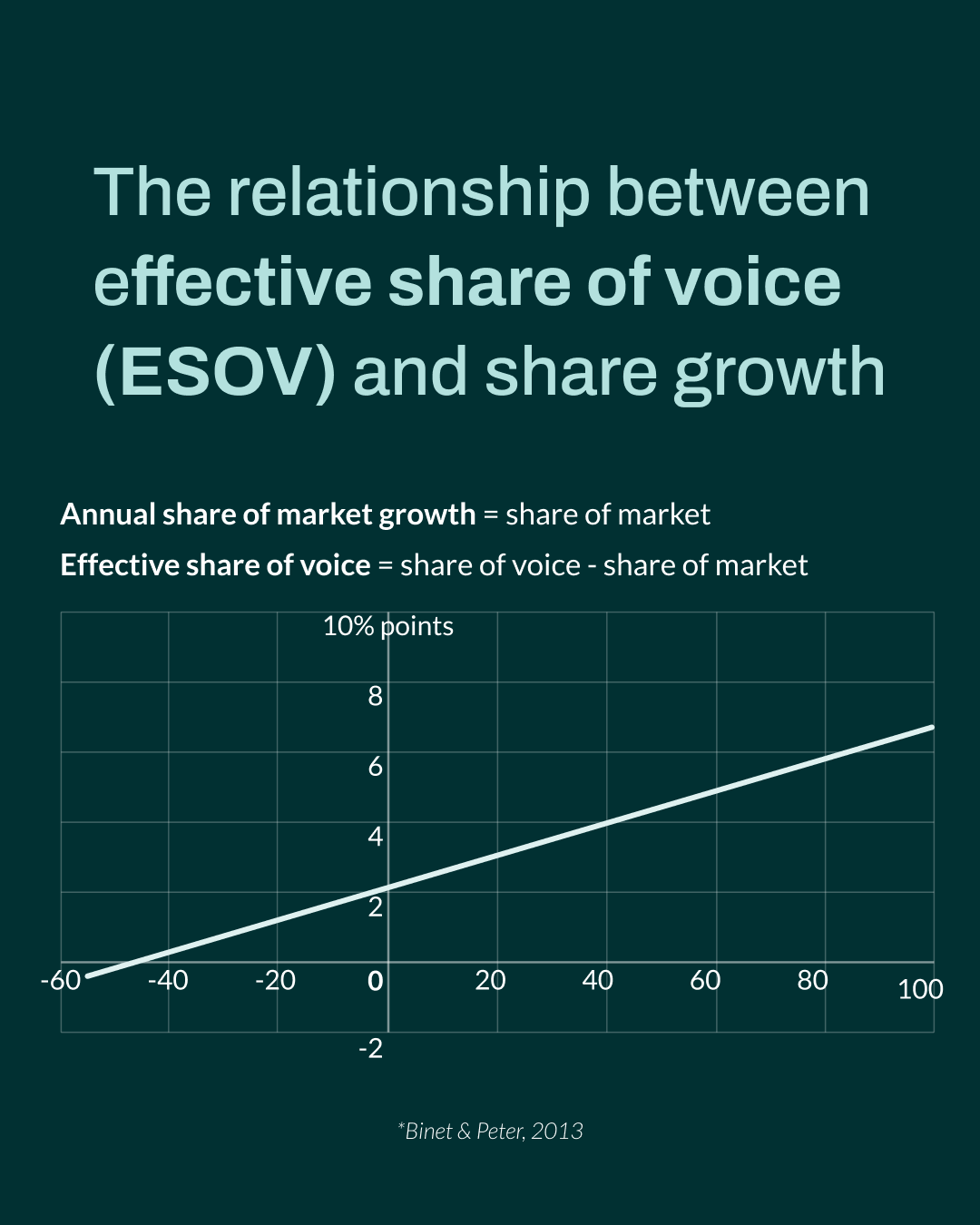
There’s growing evidence that an over-reliance on short-term campaigns, those lasting less than one quarter, is eroding long-term effectiveness. Frequent resets, a lack of sustained messaging, and shifting creative all contribute to reduced impact over time.
Short-term tactics may drive temporary spikes in engagement or conversion, but they don’t build durable demand. In fact, over time, they may reduce overall efficiency by failing to develop lasting brand equity.
Measuring Brand Effectiveness
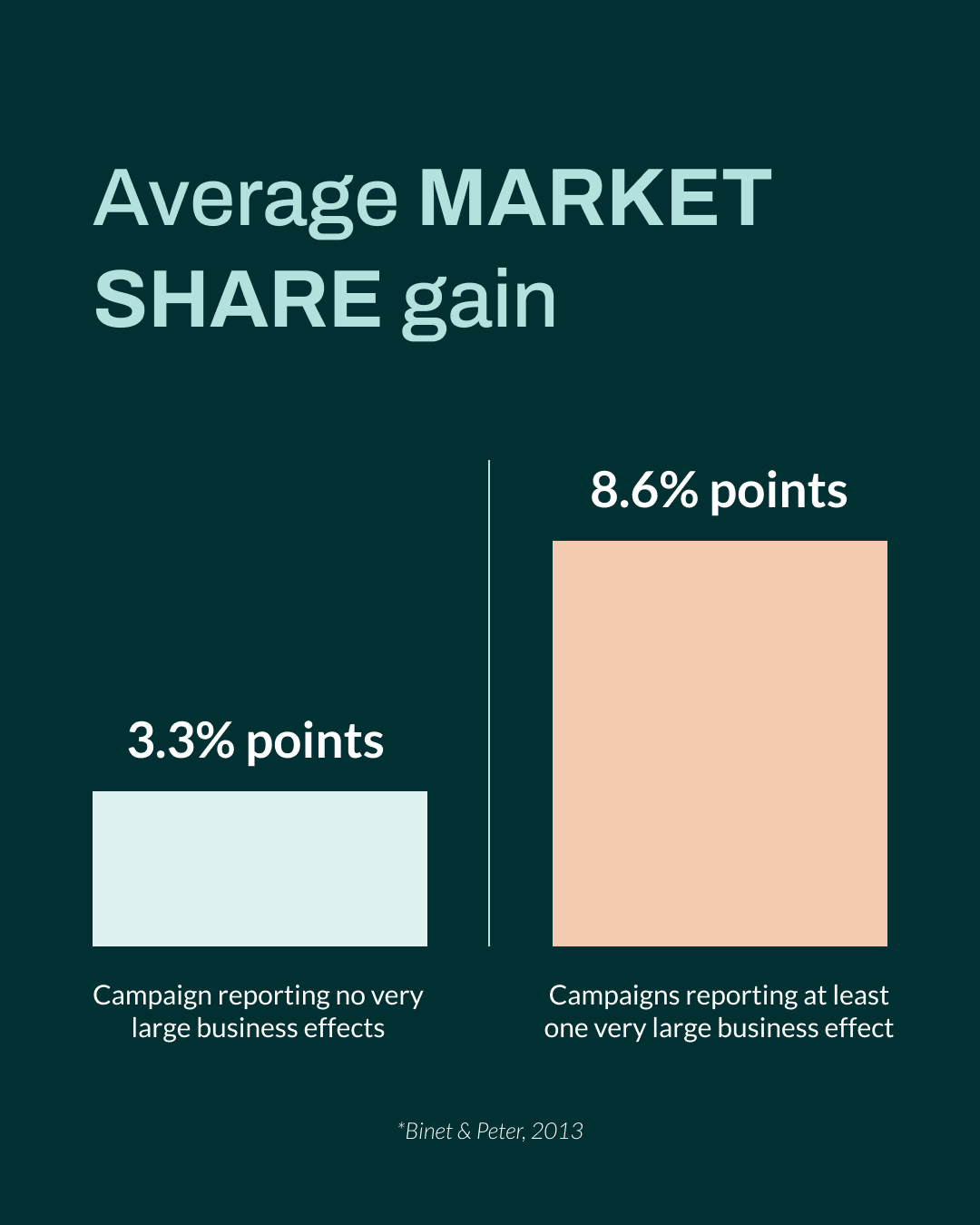
Why Traditional Metrics Fall Short
Brand campaigns should be evaluated using methods that capture broad business impact, not just immediate engagement. Econometrics and marketing mix modelling (MMM) are useful tools for measuring how marketing spend contributes to business performance across channels and over time. These methods require clean, high-quality data inputs to be effective.
Which Metrics Matter
Key indicators of brand marketing effectiveness include share of voice, impression share, brand lift studies, and ad spend relative to category totals.
Notably, there is no correlation between brand awareness and click-through rate (CTR). CTR is a performance metric that does not reflect brand growth. Engagement alone, especially short-term interactions, does not equal long-term success.
Final Thoughts
Brand marketing is not just a complement to performance, it’s the foundation on which sustainable growth is built. In an era where many marketers are shifting focus to short-term performance, those who continue to invest in brand equity will have the strategic advantage.
Long-term campaigns reduce price sensitivity, build trust, and generate compounding business effects. Paired with tactical performance campaigns, they provide the most effective and efficient path to growth.
Short-term campaigns activate demand. Brand campaigns create it.







